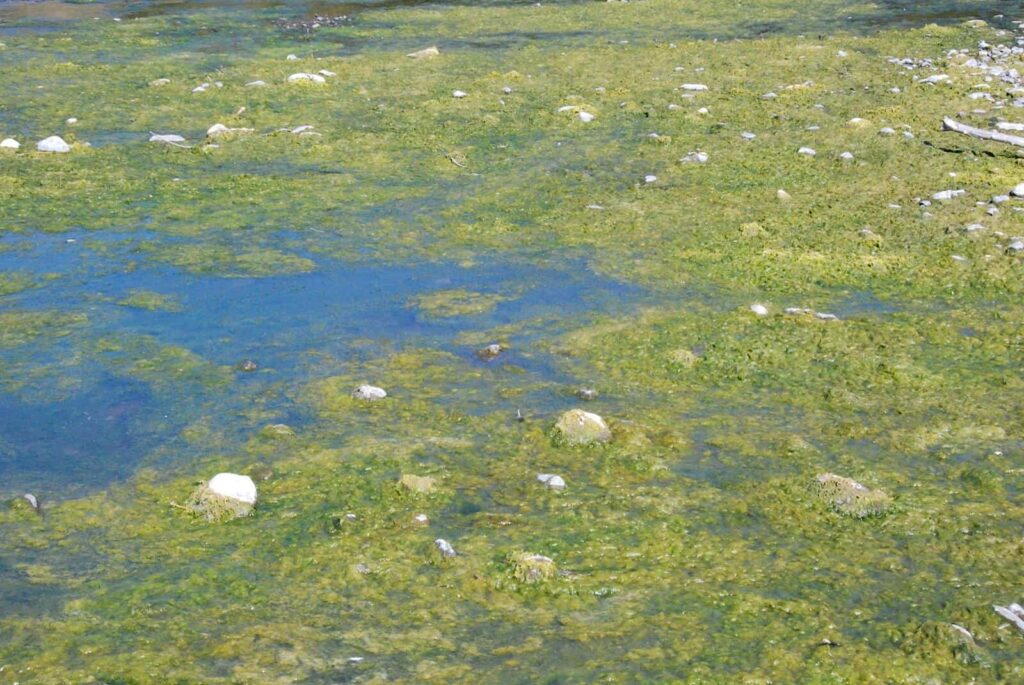Take a look at this photo, one of several taken this past Tuesday on the Tukituki a kilometre or so downstream of the Patongata Bridge.
Then consider …
One of the two potential investors in the proposed CHB dam is Ngai Tahu, a south island Maori investment giant chaired by Sir Mark Solomon.
In the 11 March edition of rural weekly Straight Furrow, Solomon has this to say about clean water …
“Ngai Tahu is committed to the rivers’ wellbeing … when we submitted to the Ministry for the Environment [Ed: referring to their proposed freshwater standards], we asked that they set a minimum limit that all freshwater rivers aspire to be swimmable. They want the definition to be wadeable, but if you talk to a kid, he doesn’t just wade, he dives straight into the water.”
And: “You cannot look at nature as separate compartments … what we do on the land affects what goes into our rivers.”
Mr Solomon has also said that Ngai Tahu would reconsider investing in the CHB dam if it did not meet environmental standards acceptable to Ngati Kahungunu, the largest iwi in our region.
Meanwhile, Ngati Kahungunu’s chairman, Ngahiwi Tomoana has publicly stated his strong reservations about the Regional Council’s plans for curbing and reducing the pollution that would result from intensified farming in CHB if the dam proceeds. Says Ngahiwi: “If the dam does not meet the environmental standards of our iwi, then they [Ngai Tahu] will review the investment.”
I suggest that chairman Ngahiwi sent this photo along to chairman Mark (with others that can be supplied), and invite him up for a swim in the Tuki.
Now that’s a photo I would like to take personally!
Tom Belford
P.S. While you’re at it Ngahiwi, why not send the photos along to Maori members of HBRC’s Regional Planning Committee. Perhaps they’d like to join the swim as well.


What are we actually looking at, though? Besides the blue which seems to be just a visual effect, it appears to be an algae bloom. I have lived on the lower Tuki for over 50 years and this was a common site in stagnant water even as a child, albeit that the river was affected by agriculture, back then, it was generally a lot cleaner.
One might suspect that it would occur naturally as summer stagnant water drys and concentrates nutrients with natural high surface area from the stones.
Absolutely right Lastman, whoever you are. This river is safe for swimming and always has been – I’ve swum in it for 60 years. Let the Health Board rate its safety, not a politician with an axe to grind. An old-timer told me that he remembers swimming at Patangata in the 1940s and there was more slime in it then than now, and my recollections of the river in the 1950s are in accord entirely. In the 1940s there was little fertilizer used, and virtually none on the hill country before areal topdressing. And certainly this was decades before irrigation of any consequence. In any case, a photo taken in late summer of the stony shallow river margin means nothing. Why not a photo of the main stream, where people actually swim?
If you are opposed to the dam Tom, argue against it, which you have done since the idea first flickered across Andrew Newman’s mind, as is your democratic right. But your piece looks like an attempt to undermine the HBRIC’s investment process. That’s a different thing altogether.
So the Tukituki “river is safe for swimming and always has been.” Ewan, I can recall the DHB issuing warnings against swimming in it. Didn’t a dog die after a river swim? Isn’t the HB Regional Council so concerned about “periphyton” that they have brought in Plan Change 6 to mitigate the problem?
You may have been swimming in the river for 60 years Ewan, but I notice that you do not claim it has had no effect on you.
In the early 1970’s I was one of the idiot yachties who sailed through the effluent off Perfume Point, but never would I claim that it was “safe”, even clothed in waterproof gear. If you think that swimming in effluent is “safe” you are kidding yourself. Please resist the temptation to mislead others.
Clive River boat ramp has a sign warning of the dangers of entering the river.There is no fresh water source to shower or even wash legs down, next to the ramp so that boaties and water enthusiast’s on leaving the water can wash off immediately any dreaded lurgies after enjoying their time on the river.
I’m on the Clive Community Group Committee and that was only one of the improvements needed we noted after a group of committee members did a tour of the area last Monday night. Another thing is that the freedom campers donation box has not been put back. One lovely lady from Whangarei commented and told us how much she was enjoying her stay.